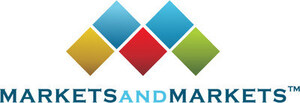
DELRAY BEACH, Fla., Nov. 20, 2025 /PRNewswire/ -- The battery passport market is projected to reach USD 2.35 billion by 2035, from USD 0.15 billion in 2025, with a CAGR of 32.1%, according to a new report by MarketsandMarkets™. The adoption trajectory of battery passports is shifting from a compliance-driven to a value-driven model. In 2025, the focus remains on compliance and preparation, primarily among Tier-1 suppliers and OEMs in Europe and North America, as they strengthen their IT and data infrastructures ahead of regulatory enforcement under the EU Battery Regulation. This stage is dominated by pilot projects and the establishment of interoperability standards through initiatives such as CEN/CENELEC and Catena-X DataSpace. By 2030, battery passports will have transitioned into a mandatory market access requirement, with the EU regulation mandating passports for EV and industrial batteries above 2 kWh. This will trigger rapid adoption, making compliance fundamental for participation in the European market.
Download an Illustrative overview: https://www.marketsandmarkets.com/pdfdownloadNew.asp?id=160933980
Browse in-depth TOC on ' Battery Passport Market'
120 - Tables
80 - Figures
210 - Pages
Lithium-ion is expected to be the largest segment by battery type during the forecast period.
Lithium-ion remains central to battery passport integration due to its scale across EVs, industrial systems, and stationary storage. A mature production ecosystem, higher oversight on sourcing and carbon metrics, and increased end-of-life requirements are accelerating the shift toward structured traceability frameworks. As EV penetration increases and manufacturers scale higher-energy-density chemistries such as lithium-ion and LFP, lithium traceability becomes essential for responsible sourcing, emissions disclosure, and alignment with tightening regulatory norms. Its designation as a strategic mineral by multiple governments heightens the need for standardized digital passports that verify origin, processing stages, and lifecycle impact to support ESG validation and cross-border compliance. Leading manufacturers, such as CATL, LG Energy Solution, and Panasonic, are implementing blockchain-based passports that align with Regulation (EU) 2023/1542, supported by structured compliance and digital reporting systems. This allows the lithium-ion value chain to serve as the baseline architecture for cross-regional data alignment and operational consistency. It also provides OEMs and storage operators with a unified model to streamline reporting, reduce compliance exposure, and support scalable verification workflows across global supply networks. Future demand trends further consolidate lithium's role in the battery passport ecosystem as consumption accelerates across grid storage, commercial fleets, industrial applications, and residential systems. As supply chains expand and competition for high-grade lithium intensifies, stakeholders are increasingly depending on battery passports to authenticate sustainability indicators, recyclability performance, and regulatory compliance.
IoT & AI-integrated battery passport is expected to be the fastest-growing segment by technology during the forecast period.
IoT and AI are emerging as strategic enablers for high-fidelity battery passports, giving enterprises a continuous, data-driven view of asset performance and compliance readiness. Embedded IoT modules deploy multi-sensor stacks that capture charge-rate gradients, impedance spectra, thermal propagation profiles, and micro-cycle stress signatures, routing encrypted data streams directly into cloud-linked battery-passport infrastructures. AI pipelines perform feature extraction, signal conditioning, and anomaly scoring to validate telemetry integrity and convert raw inputs into standardized battery passport fields, such as SOH/SOE projections, degradation coefficients, warranty-risk indices, carbon-intensity values, and sourcing validation outputs. This linkage ensures that operational, sustainability, and provenance data remain machine-readable and audit-ready under US, EU, and Asian reporting schemas. Growth is further accelerating as regulators mandate continuous, API-based lifecycle reporting rather than episodic submissions. Companies leverage IoT and AI-integrated battery passport stacks to reduce diagnostic workload, optimize predictive maintenance programs, strengthen second-life valuation models, and maintain authenticated data trails across deployment, repurposing, and recycling stages. The combined architecture stabilizes safety monitoring, shortens response cycles, and serves as a scalable governance layer for end-to-end battery lifecycle management.
North America is expected to record the highest growth rate during the forecast period.
North America is building an integrated traceability architecture driven by regulatory alignment, industry collaboration, and digital infrastructure efforts that support interlinked compliance across markets. In 2023, the Global Battery Alliance developed unified sourcing, ESG, and carbon data guidelines that have since become reference points for stakeholders in the US and Canada. That same year, Glencore, CMOC, and ERG's ReSource platform demonstrated mine-to-cell tracking through Tesla-associated pilots, strengthening upstream material visibility for regional battery plants. In 2024, a Canada-driven program involving OPTEL, Delphi, Norda Stelo, and the Battery Metals Association of Canada (BMAC) moved forward with an auditable ESG and GHG reporting framework tailored to domestic NMC supply chains. Simultaneously, the US National Institute of Standards and Technology (NIST) initiated technical evaluations of digital battery passport models, focusing on lifecycle reporting, data integrity, and circular flow pathways. Corporate integration is also progressing. In 2024, Volvo EX90 partnered with Circulor to deploy a battery passport delivering verified inputs on sourcing, carbon metrics, and asset condition, aligned with US disclosure expectations. Collectively, these efforts position North America as a technically prepared and scalable environment for the rollout of battery passports across the EV and energy storage sectors.
Key Market Players of Battery Passport Market :
Prominent players in the Battery Passport Companies include Minespider GmbH (Germany), AVL (Austria), Siemens (Germany), Circulor (UK), and Optel Group (Canada), among others.
Get 10% Free Customization on this Report: https://www.marketsandmarkets.com/requestCustomizationNew.asp?id=160933980
This report provides insights on:
- Analysis of key drivers (battery supply chain transparency and sustainability, regulatory enforcement and compliance mandates, consumer-centric traceability and brand trust), restraints (data confidentiality and market reluctance, high CapEx and OpEx for compliance, fragmented standards and interoperability gaps), opportunities (circular economy, battery-as-a-service enablement), and challenges (transition and implementation challenges, technical complexity, data accuracy, governance, and cybersecurity) influencing market growth
- Product Development/Innovation: Detailed insights on upcoming technologies, R&D activities, and product launches in the battery passport market
- Market Development: Comprehensive information about lucrative markets; the report analyzes battery passports across various regions
- Market Diversification: Exhaustive information about new products, untapped geographies, recent developments, and investments in the battery passport market
- Competitive Assessment: In-depth assessment of market shares, growth strategies, and service offerings of leading players like Minespider GmbH (Germany), AVL (Austria), Siemens (Germany), Circulor (UK), and Optel Group (Canada).
Related Reports:
Get access to the latest updates on Battery Passport Companies and Battery Passport Industry Growth
About MarketsandMarkets™:
MarketsandMarkets™ has been recognized as one of America's Best Management Consulting Firms by Forbes, as per their recent report.
MarketsandMarkets™ is a blue ocean alternative in growth consulting and program management, leveraging a man-machine offering to drive supernormal growth for progressive organizations in the B2B space. With the widest lens on emerging technologies, we are proficient in co-creating supernormal growth for clients across the globe.
Today, 80% of Fortune 2000 companies rely on MarketsandMarkets, and 90 of the top 100 companies in each sector trust us to accelerate their revenue growth. With a global clientele of over 13,000 organizations, we help businesses thrive in a disruptive ecosystem.
The B2B economy is witnessing the emergence of $25 trillion in new revenue streams that are replacing existing ones within this decade. We work with clients on growth programs, helping them monetize this $25 trillion opportunity through our service lines – TAM Expansion, Go-to-Market (GTM) Strategy to Execution, Market Share Gain, Account Enablement, and Thought Leadership Marketing.
Built on the 'GIVE Growth' principle, we collaborate with several Forbes Global 2000 B2B companies to keep them future-ready. Our insights and strategies are powered by industry experts, cutting-edge AI, and our Market Intelligence Cloud, KnowledgeStore™, which integrates research and provides ecosystem-wide visibility into revenue shifts.
To find out more, visit www.MarketsandMarkets™.com or follow us on Twitter, LinkedIn and Facebook.
Contact:
Mr. Rohan Salgarkar
MarketsandMarkets™ INC.
1615 South Congress Ave.
Suite 103, Delray Beach, FL 33445
USA: +1-888-600-6441
Email: [email protected]
Visit Our Website: https://www.marketsandmarkets.com/
Logo: https://mma.prnewswire.com/media/1868219/MarketsandMarkets_Logo.jpg
SOURCE MarketsandMarkets





Share this article